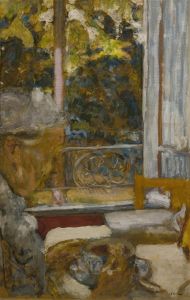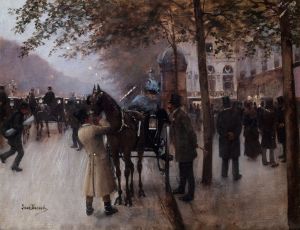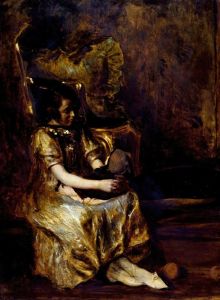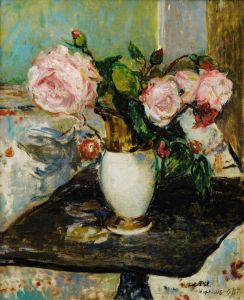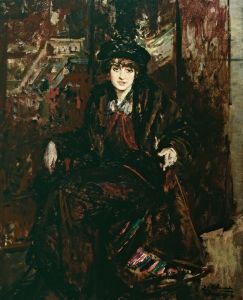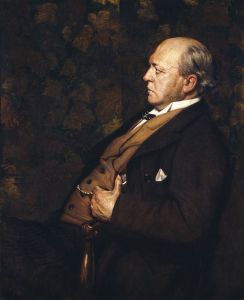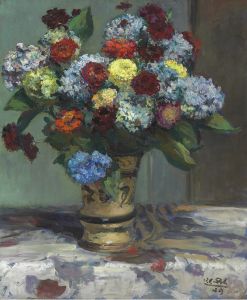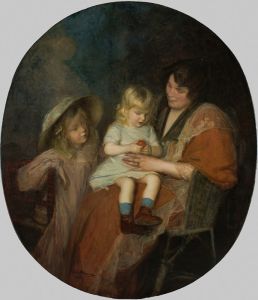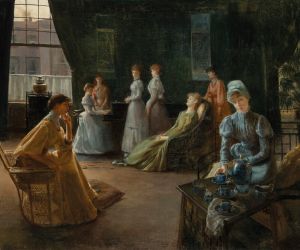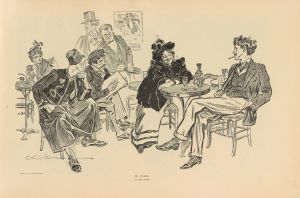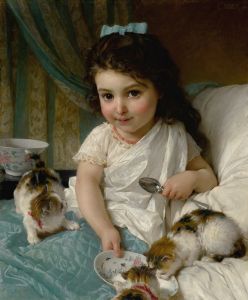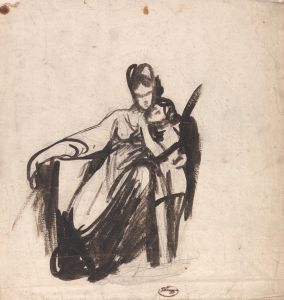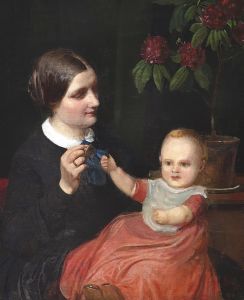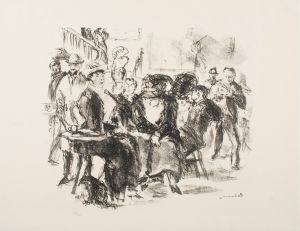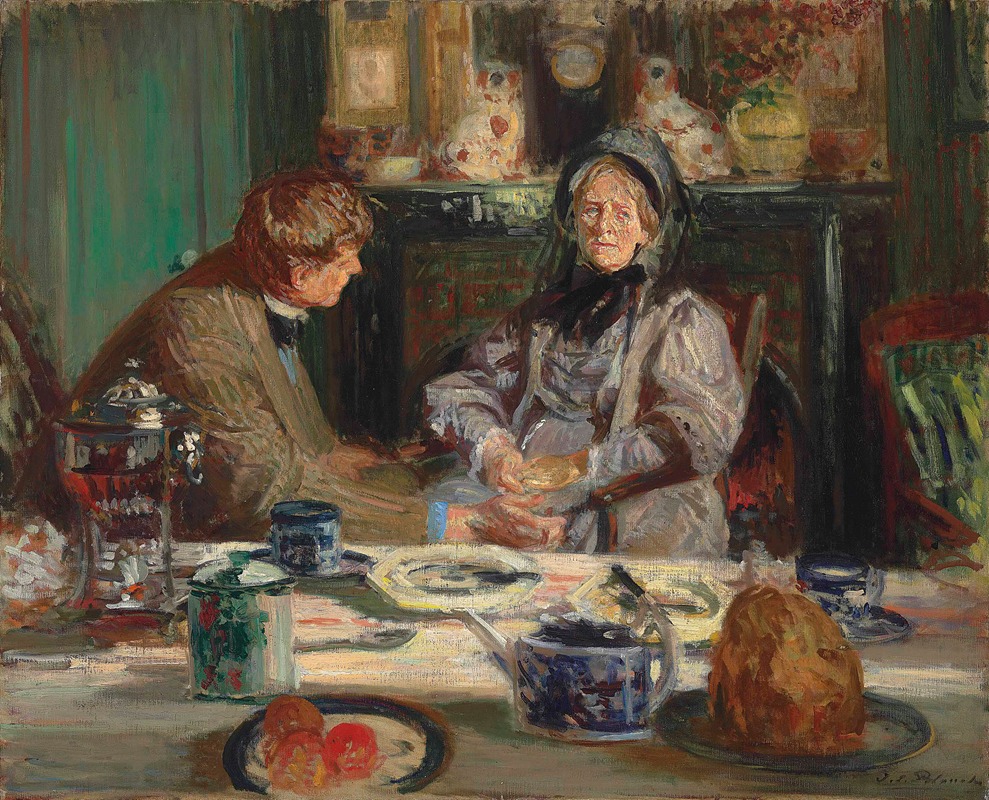
Le peintre Sickert et sa mère, Petit-déjeuner á Neuville
A hand-painted replica of Jacques-Émile Blanche’s masterpiece Le peintre Sickert et sa mère, Petit-déjeuner á Neuville, meticulously crafted by professional artists to capture the true essence of the original. Each piece is created with museum-quality canvas and rare mineral pigments, carefully painted by experienced artists with delicate brushstrokes and rich, layered colors to perfectly recreate the texture of the original artwork. Unlike machine-printed reproductions, this hand-painted version brings the painting to life, infused with the artist’s emotions and skill in every stroke. Whether for personal collection or home decoration, it instantly elevates the artistic atmosphere of any space.
Jacques-Émile Blanche was a prominent French painter known for his portraits and depictions of contemporary society. One of his notable works is "Le peintre Sickert et sa mère, Petit-déjeuner á Neuville," which translates to "The Painter Sickert and His Mother, Breakfast at Neuville." This painting captures a moment in the life of Walter Sickert, a British painter who was a significant figure in the transition from Impressionism to Modernism.
The painting is set in Neuville, a location that suggests a sense of domesticity and intimacy. Blanche was known for his ability to capture the essence of his subjects, and in this work, he portrays Sickert and his mother in a relaxed, everyday setting. The composition of the painting reflects Blanche's interest in the psychological aspects of his subjects, offering a glimpse into the personal lives of the individuals depicted.
Walter Sickert, the subject of the painting, was an influential artist in his own right. He was known for his innovative approach to painting, often focusing on urban scenes and the human figure. Sickert's relationship with his mother, as depicted in the painting, suggests a close bond, and Blanche's portrayal emphasizes the familial connection through the intimate setting of a breakfast scene.
Blanche's style in this painting is characterized by his use of light and color, which adds to the overall warmth and intimacy of the scene. His brushwork is both precise and expressive, capturing the nuances of the characters' expressions and the atmosphere of the setting. The painting is a testament to Blanche's skill in portraiture and his ability to convey the subtleties of human relationships.
"Le peintre Sickert et sa mère, Petit-déjeuner á Neuville" is an example of Blanche's broader body of work, which often focused on the lives of artists and intellectuals of his time. His portraits are celebrated for their psychological depth and the way they capture the spirit of the age. This particular painting is a reflection of Blanche's interest in the intersection of art and everyday life, as well as his ability to depict the personal dimensions of his subjects.
The painting is part of a larger tradition of artists portraying other artists, a theme that has been explored throughout art history. By choosing to depict Sickert and his mother, Blanche not only highlights the personal side of an artist's life but also contributes to the dialogue between artists across different movements and styles.
Overall, "Le peintre Sickert et sa mère, Petit-déjeuner á Neuville" is a significant work that showcases Jacques-Émile Blanche's talent for capturing the essence of his subjects and his interest in the intimate moments of daily life. The painting remains an important piece in understanding the connections between artists and the personal narratives that influence their work.





